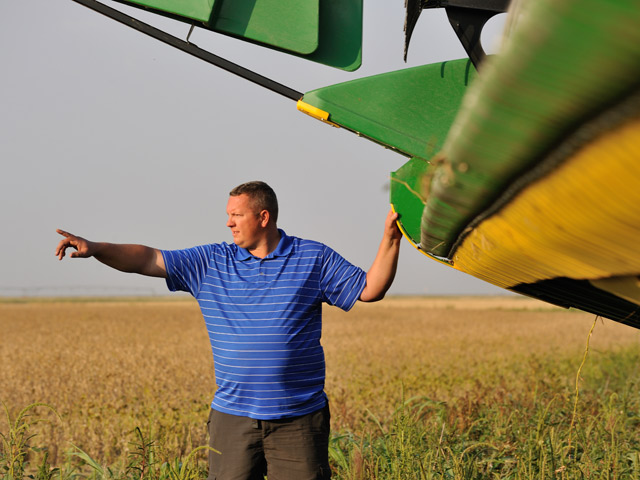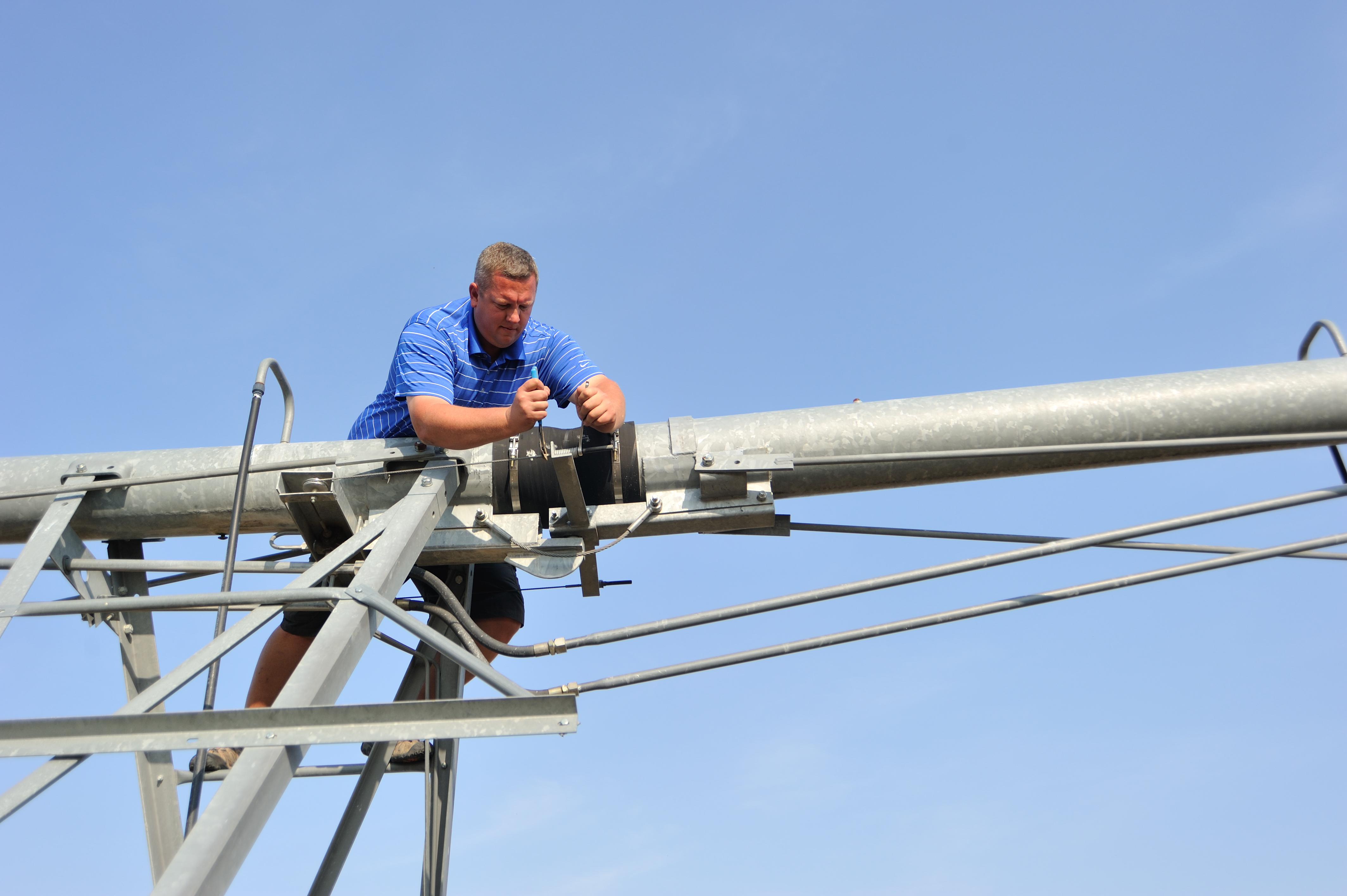American agriculture is unmatched around the world. Yet with this success comes an even greater challenge: Who will replace the half-million farmers and ranchers who plan to retire over the next two decades? Look no further than our next class of America's Best Young Farmers and Ranchers. They are among the best of their generation. They embrace the future of agriculture and are developing the technical and managerial skills to build their own successful businesses.

With a rare whiff of rain in the September air, it was pretty obvious, actually very obvious, that Clint Reiss really, really wanted to be out in the combine. Instead, the chief financial officer of Southwest Family Farms sat behind his desk talking to a visitor who was late for his appointment, having been thoroughly lost somewhere along the fives miles of roads separating his farm from the nearby town of Kismet, Kan., population 459. Call it the curse of the modern farmer executive–seat time in the field competes with chair time in the office.
That September day was atypical of 2012. Dark brush strokes of rain drifted across far-away horizons. The storms raised hopes the long night of the Kansas drought might be coming to an end. Indeed, 4 inches of rain had fallen here only two weeks before, and now, more seemed imminent. It did rain. But not enough. By year-end, the drought had re-strengthened. This most recent of many droughts is the worst in a generation and has rolled on into 2013.
Kansas weather is noteworthy for its variability. The hottest day recorded is 121°F (1936). The low, a frigid -40°F (1905). Let it be known, however, that on June 28, 2012, at Norton Dam in northern Kansas, the record high nearly fell. The official temperature that day was 118°F. Rainfall averages 16 to 18 inches a year and temperatures top 90°F for 90 days–at least.
"The farm's silty-loam soils are pretty good soils for this area," Clint says. "But it is irrigation that allows everyone to survive out here." Any satellite photo of the county shows how the many dozens of circle pivots and the giant Ogallala Aquifer below them have transformed the landscape.
Clint is the fifth generation of his family to grow grain in the High Plains of southwest Kansas. The farm's mixed-grass prairie soils support a grain-production enterprise spanning 12,000 acres–4,000 irrigated and 8,000 dryland. Southwest Family Farms tends another 20,000 acres in a custom-farming business. The Reiss operation is all grain, selling corn, soybeans, milo and wheat.
 |
Home base for the farm is Seward County, just north of the Oklahoma Panhandle. The farm also works ground in Morton and Stanton counties, both on the Colorado line. The flash-flood prone Cimarron River, rising out of Johnson Mesa in New Mexico and once boasting plums, grapes, choke cherries and gooseberries along its banks, cuts diagonally across Seward on a 698-mile journey to the Arkansas River, west of Tulsa, Okla.
Clint and his family, paternal grandmother, Kathryn, parents, Stan and Cheri, and brother, Brett, comprise the partnership that is Southwest Family Farms. The family practices the art of modern-day agriculture at a high level ... literally. Both Stan and Clint have pilot licenses and a plane modified to fly just above stall speed over their fields. It occupies space in a near spit-shined machinery shed. The shop is part of a new building erected two years ago that now houses offices, a conference room for 25 and reception area.
"It gives us a professional appearance," Clint says. It's an important asset as the family works hard to build long-term relationships with its many landlords.
So is communication. A web site with videos produced by Brett show the farm in operation (www.southwestff.com). The Reiss farm also produces a calendar with photos of farming operations, and the family sends out a semi-annual newsletter to their landlords. Clint's dad calls the landlords at least twice a year.
Clint has two children, Jayde, 11, and Coleby, 7.
He's a coach for his daughter's basketball team. He's also dipping his toe into football, putting in coaching time with his son's team.
"It's neat to coach your daughter and son," he says. "I like to see them improve and see their work ethic grow."
As a family, the operation owns 1,800 acres. The rest is rented or custom-farmed. The family is planning for rapid growth, looking to manage 40,000 acres in another seven years.
Clint expects the farm will grow as long as it is able to deploy cutting-edge technology and sound production practices. "We always try to be a step ahead," he says.
For example, the farm works with the Veris Technologies soil-testing system. The farm uses the Veris cart to identify soil types across all of its acres.
The cart measures soil electrical conductivity. It's an effective way to map soil types. Smaller soil particles, such as clay, conduct more current than larger silt and sand particles.
Soil electrical conductivity (EC) measurements have been used since the early 1900s. But Veris mobilized the process and added a GPS component to the system. As the Veris EC cart is pulled through the field, one pair of coulter-electrodes injects a known voltage into the soil, while coulter-electrodes measure the drop in that voltage. The result is a detailed map of the soil texture variability in the rooting zone.
Clint led the effort to integrate the soil tests with GPS mapping technology. The data drives the farm's use of variable-rate applications of pesticides, fertilizer and seed. The data also helps Clint determine the break-even point for each grain crop. Those breakevens guide him as he develops selling points for the farm's marketing arm.
This is a system that produces a good deal of raw data. But for Clint's purposes, it's not yet possible to put it all to good use. The state of the technology does not allow him to sew yield maps, variable-rate maps and the varieties planted into one clear production picture.
"We have a huge data base," he says. "But we're only starting to make judgments from it. In 10 to 15 years, I expect all that to change. All the [data] will be layered, each layer on top of the other."
Clint finds another way to stay current with the competition is to talk with the competition. He is part of an ongoing conversation by a peer group of growers farming in Illinois, Indiana, Iowa, Kentucky, Minnesota, North Dakota and Texas. He and the other peer group members mine extra value out of their farming experiences by comparing production, financial and management outcomes gathered from several states and over tens of thousands of acres.
The group meets twice a year. But the back-and-forth conversation goes on constantly. At its last meeting, the farming group was joined by representatives from three banks. Clint says the bankers talked about the services their institutions could bring to the group's farming operations.
"They also explained how they look at our numbers," Clint says, adding that it is this insight that will help the group prepare for any number of contingencies. "With the same financial [format], it makes it easier for all of us to do business with these banks."
And perhaps, do business within the peer group. The group may well see a day in which it pursues business opportunities in a larger partnership. "We're looking at other investments, places we could pool our money. We're even looking at farming together, at a separate farm where we could learn from each other," Clint says.
"I've demonstrated a willingness to study and then adapt new technologies," he says. "We integrated those technologies into our management practices and produce information to improve the profitability of the farm."
But the peer group raises the level of the game.
"I can talk to someone who is not my neighbor. I can look at his numbers, and he can look at mine," Clint says. "We're all ranked by someone outside the group," he adds. "So, if we compare labor costs and I'm 20th in the group, I can ask why."